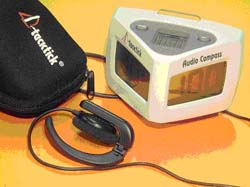Sailing and Boating
This content is also available in:
Español (Spanish)
A wide variety of water sports involve boats. Some sailing and boating techniques may be easier than others for a person who is blind or has low vision, but all are attainable.
Tips for Boating and Water Safety
Here are some suggestions for boating safety and adaptations for people who are blind or have low vision:
- Always become well-oriented to the boat you plan to use.
- For sailing, boats with tillers are preferred over boats with wheels. Boats with tillers allow the helmsman who is blind or has low vision to gain a better feel for the helm.
- The most important feature to consider is the response of the helm to your commands.
- Rowing or sculling can be done by using a caller from a boat following behind.
 Adaptive equipment, such as an auditory compass or sonar or talking GPS, can be helpful.
Adaptive equipment, such as an auditory compass or sonar or talking GPS, can be helpful.- Try our sensory development exercises to increase your sound-tracking and localization skills. See Maximizing all Your Senses for more information. These are especially useful when you are out at sea or on a smaller lake.
- Join or visit a boating club near you for general boating and sailing safety tips.
- If you have low vision, discuss optical devices, such as telescopic lenses, with your eye doctor. Some of these devices may be helpful for visual spotting and scanning while you are sailing. See What Is a Low Vision Examination? for more information.
Resources for Sailing and Boating